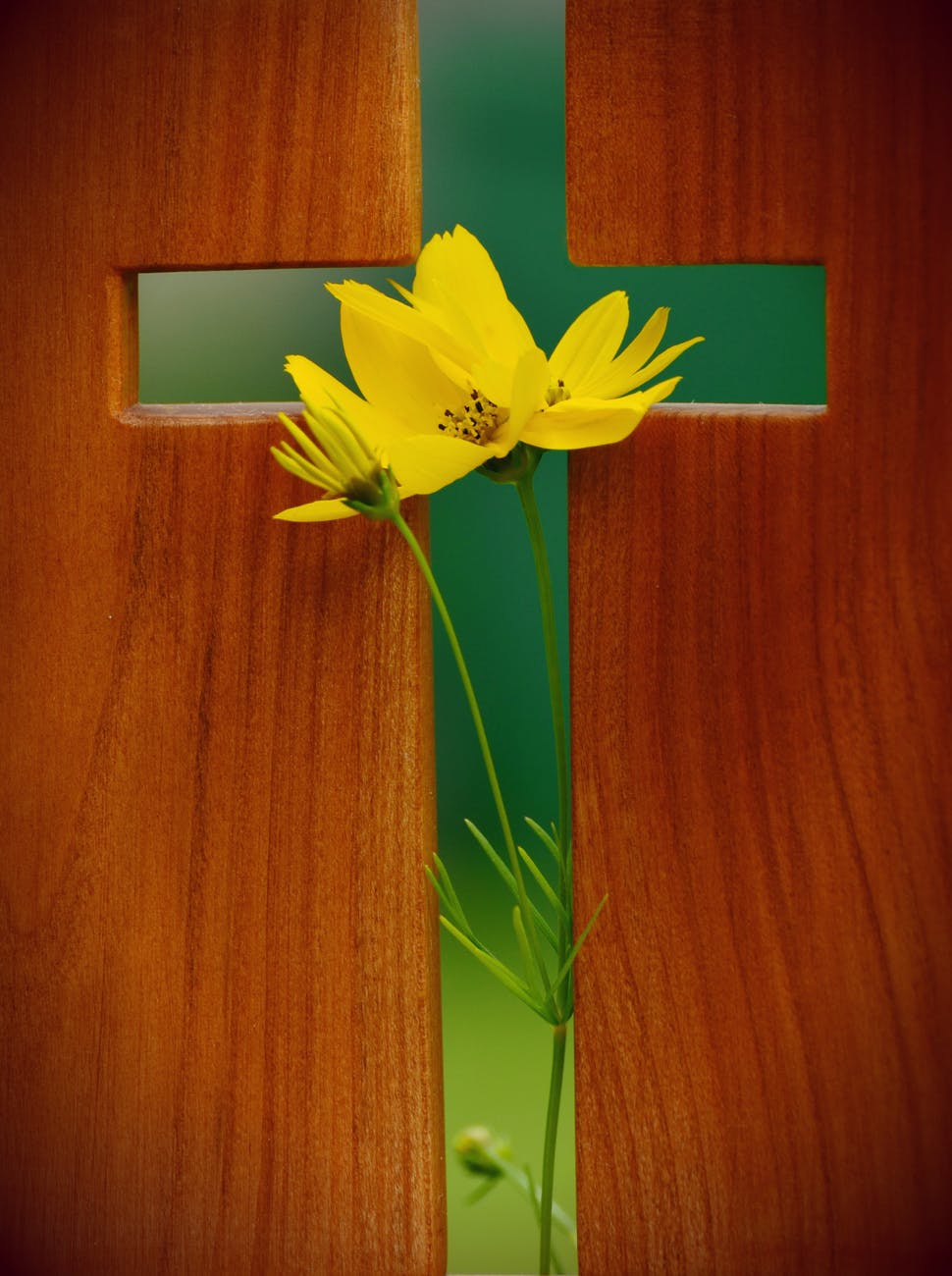The first question I want to ask is what is Holy Saturday? The easy answer is that “Holy Saturday is the day before Easter and is the date during Holy Week when Christians engage in preparations for Easter services. Among Anglicans it is typically referred to as Eastern Even (Easter Eve) and among Filipinos as Black Saturday. Eastern Orthodox Christians call it The Great Sabbath because Jesus “rested” in the tomb on this day. Sometimes it is called Easter Saturday, but that is incorrect – technically, Easter Saturday is the Saturday following Easter.
Some early Christian legends recount how the “Harrowing of Hell” occurred on this day. While his body lay in the tomb, Jesus visited hell to rescue the many just and good non-Christians held there. This descent into Hell created a way for all those born before Christ to be redeemed, thus eliminating the problem of teaching that good people would be tormented for all eternity. However, some Christians believe that Jesus only went to Sheol or Hades because this place of shadows is a temporary place whereas Hell is a future realm to be accessed after judgement. In the very early Christian church, Christians would normally fast during the day and participate in an all-night vigil before a baptism of new Christians and celebratory Eucharist at dawn. During the Middle Ages many of the Holy Saturday events were transferred from the night-time vigil to dawn services on Saturday. Modern Catholic churches observe Holy Saturday by severely restricting all religious observances. Altars are stripped bare. No sacraments are administered except in emergencies, for example, if someone is close to death. Neither weddings nor funerals are held. This is the only date in the liturgical calendar on which masses are not held. On Holy Saturday the Church waits at the Lord’s tomb, and meditates on His Passion and Death and His descent into Hell. With prayer and fasting we await His glorious Easter resurrection. Mary is also a Holy Saturday symbol. According to Catholic tradition, Mary represents the entire body of the Church. As she waited in faith for the victorious triumph of Her Son over death on the first Holy Saturday, so we too wait with Mary on the present Holy Saturday. This faithful and prayerful symbolic waiting has been called the Ora della Madre or Hour of the Mother.
This is clearly an ‘in-between’ time after the Crucifixion and before the Resurrection. As has been suggested earlier it is ‘a liturgically sparse time of reflection’. One writer has even gone as far as describing Holy Saturday as ‘a day of atheism’ (Alan E. Lewis), because, as one reviewer of Lewis’ book (‘Between Cross and Resurrection: A Theology of Holy Saturday’ W. B. Eerdmans 2003) puts it; “Jesus is dead, his message and person discredited. The kingdoms of this world have won, and the God Jesus trusted in is seen either to have failed Jesus or as ultimately powerless against sin and death”. It is only against the background of Jesus death and the failure of his mission that the glorious mystery of the Resurrection can be fully appreciated.
It could be argued that life itself is full of these ‘in between’ times. Between birth and death for example, as the songwriter Joni Mitchell puts it in her song ‘Hejira’ (1977);
“I know- no one’s going to show me everything
We come and go unknown
Each so deep and so superficial
Between the forceps and the stone’”
There are also the years of childhood and adolescence, times of great change and development which can be both a time of difficulty and maturity. Without seeming too flippant, what I have called ‘in between’ times can be found in the most ordinary experiences, the reading between starting a finishing a book, or the walking between the start and the end of a journey. If you want to look at the biblical narrative think for a moment of the desert experience of Israel, their ‘in between’ time lasted for 40 years. They wandered as a result of their inability to appreciate God’s love but they also learned a great deal about divine provision for them both in their imprisonment and the ‘freedom’ of the desert. These ‘in between’ times can lead to impatience but they are essential if we are to learn the lessons of life, for example when making a journey we can be so fixed on our arrival that we can easily miss the insights to be gained on the way. Robert Louis Stevenson may have been thinking of this when he said ‘To travel hopefully is a better thing than to arrive’.
But then I also want to take a cue from the insight I mentioned earlier and see Holy Saturday as a ‘waiting time’, it is a day when we just have to sit still and not do anything. Sometimes Christians seem to live in a continuum where everything is happening at the same time, yet the gospels and church traditions ask us to be patient and enter into this story and honour it. This means keeping Easter Day for Easter Day and being content to be where we are now. This may seem artificial but Christians have always followed the season of Lent and the time of Holy Week as a devotional exercise that honours the story and lead us into its meaning step by step. Some see the church itself as an organisation in waiting. In an article in the ‘New Yorker’ magazine called ‘Confessions of a Church Goer’ the novelist John Updike wrote this; “The future is not just an extension of the past; like a particle being measured, it eludes prediction. Judaism and Christianity are both religions of waiting-waiting in one case for the Messiah, in the other for the Messiah’s Second Coming. Christian time is an interim, which has stretched linger than the prophets and early saints expected. Something might happen in faith’s future”
Even the most cursory examination of a concordance will show you how important the theme of waiting is in the Judaeo Christian scriptures – my favourite is from the prophecy of Isaiah; “those who hope in the Lord……those who look to the Lord” (REB) and “those who wait on the Lord will renew their strength” (NRSV).
Waiting has some very negative connotations, waiting for something seems to be nothing, a ‘no space’ where nothing happens, a space we fill up with all sorts of things to distract us, but Christian spirituality demands that we pursue a sort of active waiting, a sitting still in prayer and reflection until God is revealed. I suggest that this attitude is summed up very well by the Welsh poet and priest R. S. Thomas in his poem ‘Kneeling’ which is short enough to quote in full;
“Moments of great calm,
Kneeling before an altar
Of wood in a stone church
In summer, waiting for the God
To speak; the air a staircase
For silence; the sun’s light
Ringing me, as though I acted a great role.
And the audiences
Still; of all that close throng
Of spirits waiting, as I,
For the message.
Prompt me, God;
But not yet. When I speak,
Though it be you who speak
Through me, something is lost.
The meaning is in the waiting”.
My final reflection here is a familiar one. These verses may not seem appropriate for Holy Saturday but they illustrate the tension between the ‘now’ and the ‘not yet’, that place where knowing is partial and where it will be complete. Holy Saturday is a place of waiting but it is not somewhere we are meant to stay because we are on a journey towards the light and one day, as Paul writes; “At present we only see puzzling reflections in a mirror, but one day we shall see face to face”. Easter Day holds before us that tantalising glimpse of God’s ‘new thing’, that new reality which is both the present state for the faithful and the ultimate destination of everything. But for’Holy Saturday’ there are no voices and we must wait in silence.
(The John Updike quote is taken from ‘Confessions of a Church Goer’ ( The New Yorker Magazine/ The Guardian 8th January 2000). The R.S. Thomas poem from his ‘Collected Poems’ 1945- 1990 p. 199). And Isaiah’s words are from Isaiah 40; 27- 31. The Apostle Paul writes to the Corinthians in the 13th chapter of his first letter).



